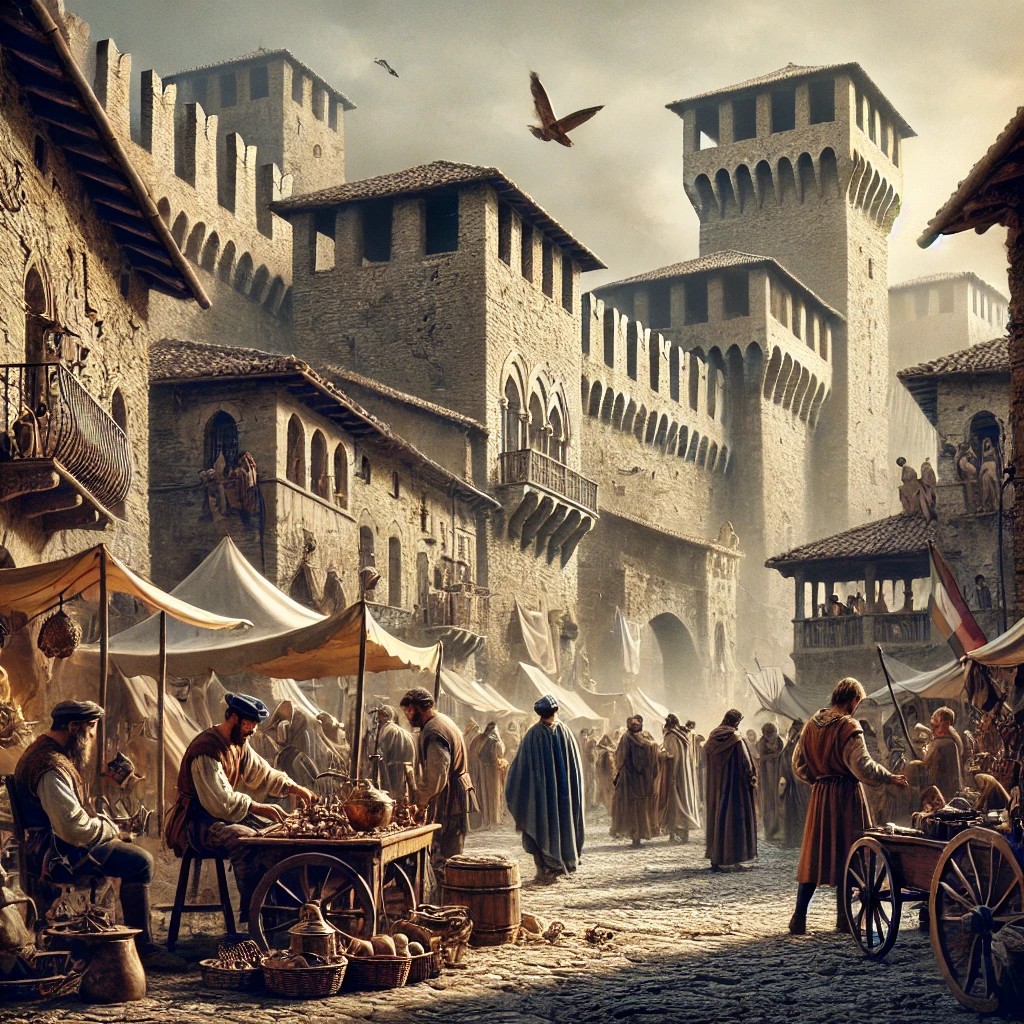The Bergamo of the Communal Age
From the first commune to Venetian rule

The city of Bergamo, in the heart of mediaeval communal Italy, experienced a highly dynamic historical course, passing from communal freedom to Venetian control. Starting in the 11th century, with the promulgation of the first municipal statutes, Bergamo emancipated itself from feudal powers, replacing papal and imperial authorities with autonomous institutions such as town assemblies, consuls and magistrates - Image generated with AI
In the midst of the flourishing political and social experimentalism of the age of the medieval Italian municipalities (11th - 12th), Bergamo emerged as a stage of great importance for a rapidly changing society. Bergamo - with the enactment of its first municipal statute - began to build a new city organisation emancipated from the feudal powers previously hegemonic in Italy.
The control of feudal lords embodied in the papal messes and aurotiras was replaced by new institutions formed by city assemblies, consuls and magistrates that included a very substantial part of the population in the city's governmental processes. However, these new and apparently more democratic decision-making processes were soon followed by new and bloody struggles. Old Bergamasque aristocratic families such as the Suardi and Rivola began to split into factions fighting for control of the new political institutions, while at the same time a new class of merchants and artisans emerged ever stronger to contend for power with the old aristocratic classes.
The turmoil did not prevent the city from prospering, and the communal age saw the emergence of major works, such as the construction of the walls of Upper Bergamo and the civic towers. Textile and metalworking activities further contributed to the city's wealth. Towards the middle of the 14th century, the municipality gradually lost its autonomy, entering the orbit of the Duchy of Milan, led by the Visconti family. In this context Pandolfo III Malatesta was appointed as the Visconti's vicar for control of the city along with that of Brescia.
In the meantime, the situation in Lombardy was changing and the Milan of first the Viscontis and - later - the Sforzas was contending with the Republic of Venice for control of northern Italy. Finally after intrigues and conflicts Venice finally gained control of Brescia and Bergamo, which became part of Venetian rule from 1428, following the Peace of Ferrara. The entry into the Venetian orbit ushered in a new period of prosperity and splendour for the city, which thus inaugurated its entry into the age of the Renaissance.
Elisa Occhipinti. L'Italia dei comuni. Secoli XI-XIII, Roma: Carocci Editore, 2001
Sito: Maria Nadia Covini. "Nell'età di Pandolfo Malatesta. Signore a Bergamo, Brescia e Fano." In Signorie e poteri territoriali nell’Italia del tardo Medioevo, a cura di Marco Gentile, 245–268. academia.edu, Milano: Vita e Pensiero, 2011.
Toniatti Francesco
Master of Arts in International Relations - University of Leiden
Master of Arts in History and Oriental Studies - University of Bologna
Former History Teacher - International European School of Warsaw
2025-03-01
Francesco Toniatti
